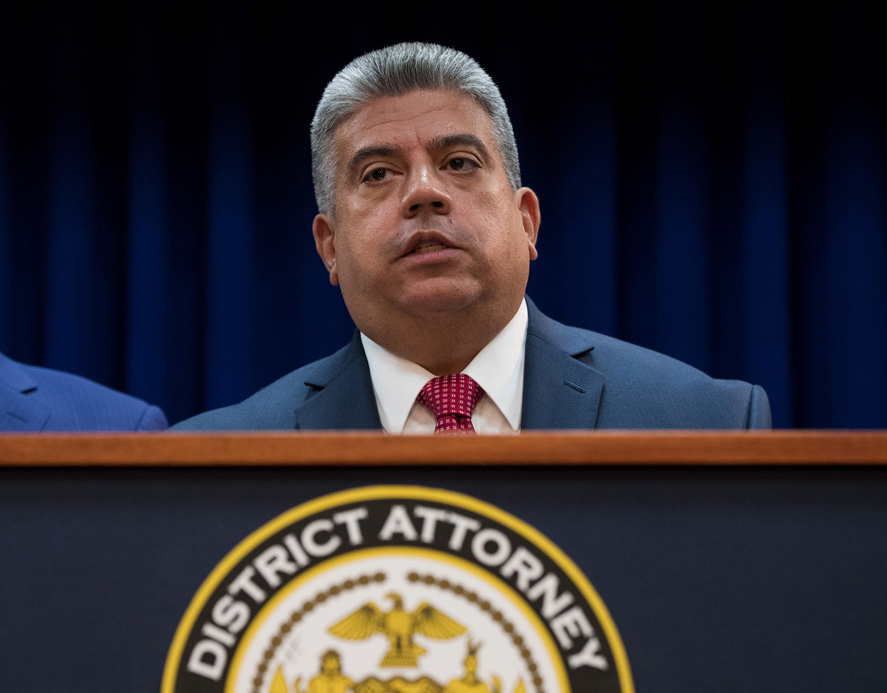

Brooklyn DA’s Office Finds Defendants Denied a Fair Trial in 1985 Murder Case
By Linh Nguyen
BROOKLYN — In 1985, Alan Anderson and Nathan Jones were convicted of second degree murder and sentenced to 18 years to life in prison.
However, inconsistent testimonies and the non-disclosure of favorable materials to the defense led to suspicion of a wrongful conviction, prompting the Kings County District Attorney to recommend their convictions be vacated.
This is yet another wrongful conviction case examined by New York’s Kings County District Attorney’s office that is detailed in the extensive report released in early July. The Convictions Review Unit investigated cases in which wrongful convictions were suspected, due to various factors of misconduct during investigations or trial proceedings.
In Anderson’s and Jones’s case, in which the defendants were convicted of the shooting and killing of a person, the CRU suspected significant issues with witness credibility, nondisclosure of favorable evidence and police conduct.
While Anderson said he arrived after the shooting, other witnesses said they saw both Anderson and Jones rob the victim and take turns shooting at him. The victim’s nephew identified Anderson in a photo array as the man who shot the victim. This witness also corroborated the story that both defendants robbed then shot the victim.
The CRU noticed a great discrepancy between one witness’ trial account and what he said when polygraphed regarding what he did after the shooting. Although polygraph tests are now considered  unreliable, the CRU found that it is the principle of what was said during both separate occasions.
unreliable, the CRU found that it is the principle of what was said during both separate occasions.
That witness and another witness also had very inconsistent accounts when compared with each other, making it appear as if they were describing two different murders, according to the report. One witness described a robbery attempt involving one armed person while the other witness described a shootout with three parties firing.
In fact, one of those witnesses was involved as a witness in six different homicide cases over an 18-month period—she was highly active in drug use, drug sale and prostitution. Though the CRU does not find this unusual considering the circumstances, they found the witness erratic, inconsistent, hostile and incredible, making her reliability highly questionable.
And, this witness did not come forward until almost two years after the crime.
Another issue during the defendants’ trial involves the prosecution’s wrongdoing regarding the nondisclosure of favorable information. The prosecution did not disclose the narrative that their testifying witness provided when he was polygraphed. That narrative contained a significant discrepancy in what the witness did after the shooting. Because of this, the defense lacked this information and therefore was not able to thoroughly cross-examine the witness and undermine his credibility, according to the CRU report.
In another instance, it was also likely not disclosed that a non-testifying witness told the police that the shooter was another individual.
“The CRU determined that defendants were entitled to know that this witness was willing to come forward, particularly given the weaknesses in the prosecution’s case, disclosure of an alternative shooter may well have changed the trial result,” the report said.
“Although the CRU’s view was that these notes did not necessarily constitute Brady material that the prosecution was constitutionally required to disclose, the CRU found the failure to disclose may have substantially hampered the defense and thus contributed to the unjust result,” the reported added.
One of the potential causes of the nondisclosures that the CRU found in this case was police conduct. They found evidence that was only in police files and not given to the prosecutors, including the statement about there being another shooter.
Plagued with issues of inconsistencies and unreliability of some of the witness testimonies, nondisclosure of important material and police misconduct, the CRU determined that the defendants were denied a fair trial and that their convictions should be vacated.
Jones served 20 years in prison and Anderson died in prison after 12 years.
To sign up for our new newsletter – Everyday Injustice – https://tinyurl.com/yyultcf9
